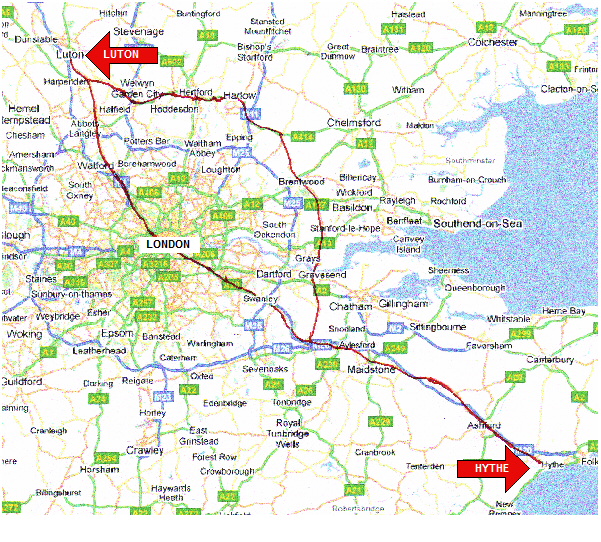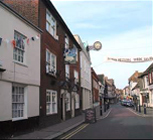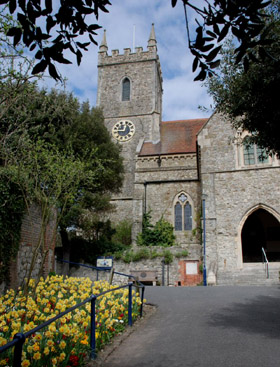Riding my bike to Grandma’s house
 Mon, April 22, 2019
Mon, April 22, 2019  For ten years, from the age of 13 until I was 23, (1949 - 1959) I lived in Luton, an industrial town some 30 miles north of London.
For ten years, from the age of 13 until I was 23, (1949 - 1959) I lived in Luton, an industrial town some 30 miles north of London.
This was where I started cycling, and throughout my teen years I rode my bike all over the South East corner of England, within a hundred mile radius of Luton.
My grandmother lived in a little seaside town called Hythe, in the county of Kent. It is on the South Coast of England, near Folkstone and Dover. On a clear day you can look out over the English Channel and see the coast of France.
 On many occasions I rode my bike to visit my Grandma, who at that time still lived in the same house on High Street (Left.) where my mother was born.
On many occasions I rode my bike to visit my Grandma, who at that time still lived in the same house on High Street (Left.) where my mother was born.
The shortest route was 100 miles, and I would usually ride down on Saturday, stay overnight, and ride back on Sunday.
The direct route took me right through the dead center of London, right down the Edgware Road to Hyde Park Corner.
If I could get an early start, usually around 5:00 am., I would be clear of London’s center before 8:00 am. when the traffic got heavier. This was a Saturday, and it was the 1950s when traffic was a lot lighter than today.
On the way back, I would take a detour north and east to Gravesend, where I would catch a ferry boat over the River Thames to Tilbury on the North Bank. This route was about 110 miles, taking me through Brentwood, Harlow, Hertford and Welwyn Garden City.
On one occasion, I rose early for my ride to Granma’s, I ate a large breakfast and immediacy threw up. Throughout my childhood and teen years I would periodically have these stomach upsets that my mother always called a “Bilious Attack.”
 Looking back, I now suspect it was nothing more than food poisoning.
Looking back, I now suspect it was nothing more than food poisoning.
We never owned a refrigerator, and meat would be cooked, and then eaten over several days.
I really had no choice but to make the trip, neither my parents nor my grandma had a phone.
I had written a letter the week before saying I was coming, had I not arrived she would be terribly worried.
I rested a couple of hours, then ate something again and set out. By now it was too late to take the direct route through London. I would have to go the long way.
I hadn’t gone but a few miles when I brought up the food I had just eaten. I struggled on, and somewhere out between Harlow and Brentwood, weak from lack of food inside me, I collapsed in the long grass at the roadside.
I hadn’t laid there long when I felt something biting me and I discovered I was lying on a red ant’s nest. I was not having a good day.
However, it did get me up and back on the bike again. Soon after I was forced to eat again, and this time it stayed down. Once I was able to eat, my strength returned and I completed the ride.
If you ever have a chance to visit Hythe, be sure to check out St. Leonard’s Church. (Above, right.) Originally a Norman Church built in 1080, it was later enlarged in 1120.
 An unusual feature is the Ossuary, or Crypt under the church, it houses a stack of human bones, and some 1,200 skulls. These are the remains of some 4,000 men, women and children, some who may have lived in the first millennium.
An unusual feature is the Ossuary, or Crypt under the church, it houses a stack of human bones, and some 1,200 skulls. These are the remains of some 4,000 men, women and children, some who may have lived in the first millennium.
They are believed to have been placed there when the church was expanded, and later when the graveyard became full and bodies were removed to make room for more.
I went there as a child in the 1940s, and always wanted to return, but during the 1950s through the 1970s it was closed to the public. Now it is open again and there is a small fee to visit, which helps in the upkeep of the church.
























